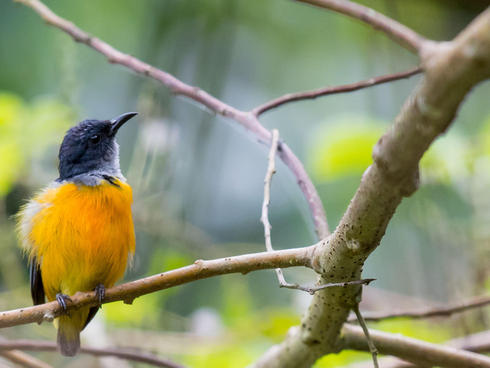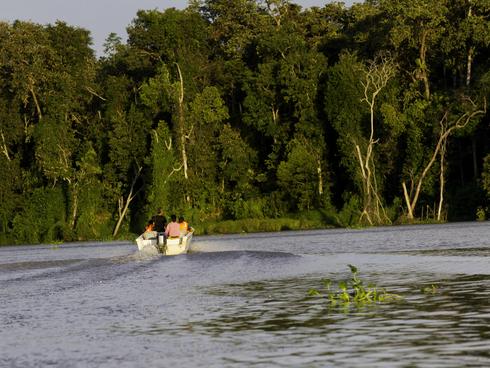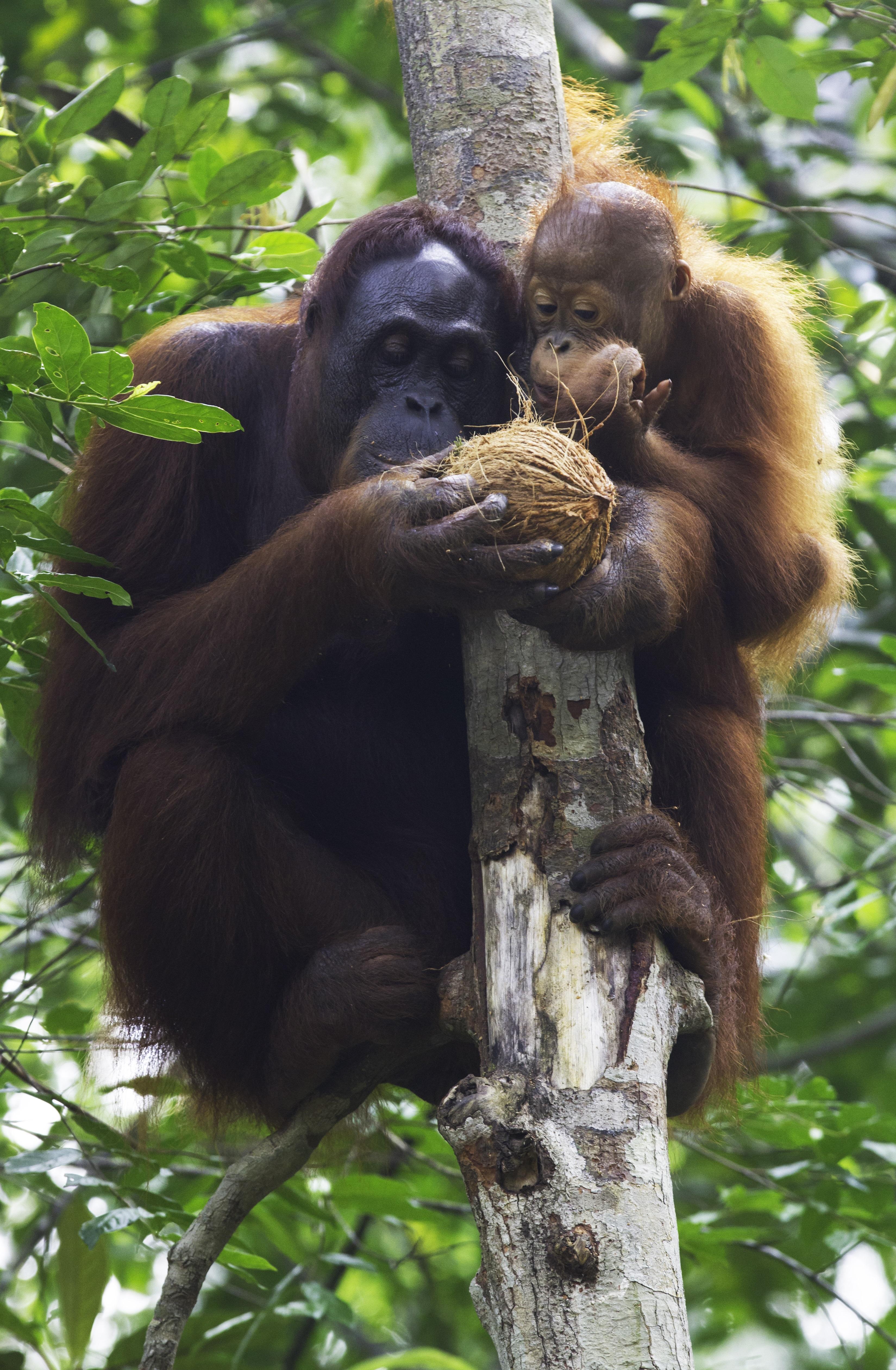The high-pitched calls of gibbons echo through the steamy valley and send chills down my spine. Gibbons live only in intact old-growth forests like this one in Danum Valley, deep in one of Asia’s most pristine wilderness regions. From our base, I lead a group of WWF travelers as we begin our morning wildlife search on nearby trails. It doesn’t take long before the forest rewards us for our effort: A male orangutan climbs out of his nest and surveys his kingdom; the locals call him Abu. With slow, confident grace he begins to travel through the canopy, swinging on vines and branches that bend and buckle under his 220 pounds of muscle and bone. He pauses to stare down at us with a look that leaves us speechless—to a person, we revere him.
Later we make our way to the vibrant port of Sandakan, on the Sulu Sea, where we board a small boat and disappear into a maze of coastal mangrove forests before turning onto the Kinabatangan River. We pass the village of Abai, and on the remotest stretch of river notice gray shapes along the bank. Our driver cuts the motors, and we silently drift to within 30 feet of two dozen elephants as they bathe, play, and feed. Two juveniles wrestle, their trunks grappling like fighting pythons, and a tiny newborn calf watches us from underneath a huge old female. Trumpets erupt like thunder from dense thickets of elephant grass.
Borneo has suffered some of the greatest habitat destruction on Earth, but there are still pristine wilderness areas like this one left. I’m so proud that responsible tourism opportunities give the protection of such places a direct economic value. I can’t wait to introduce another group of travelers to this jewel of biodiversity. Borneo’s magical forests rarely disappoint.
Travel to Borneo with WWF.








